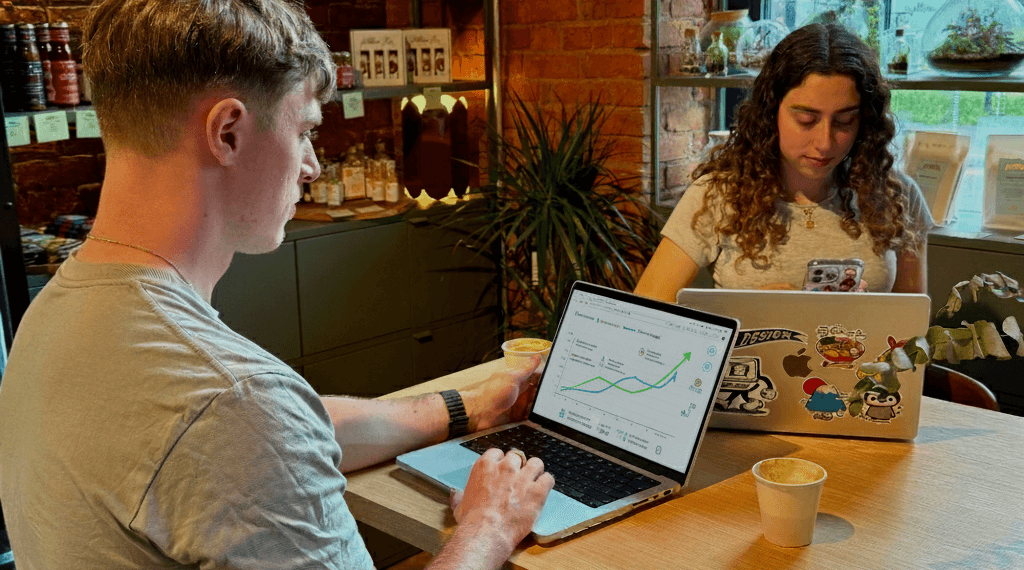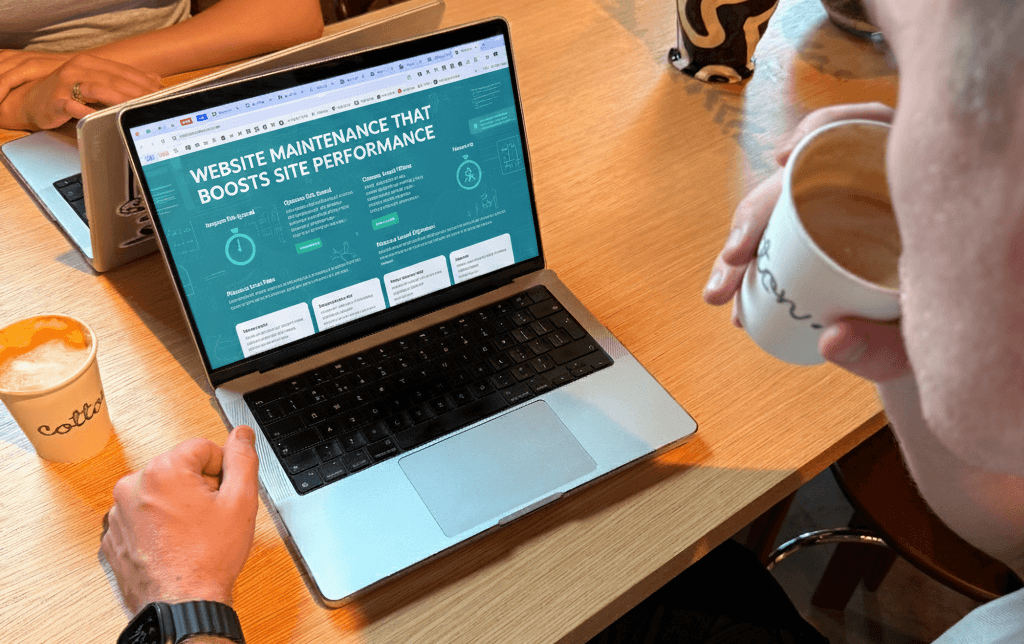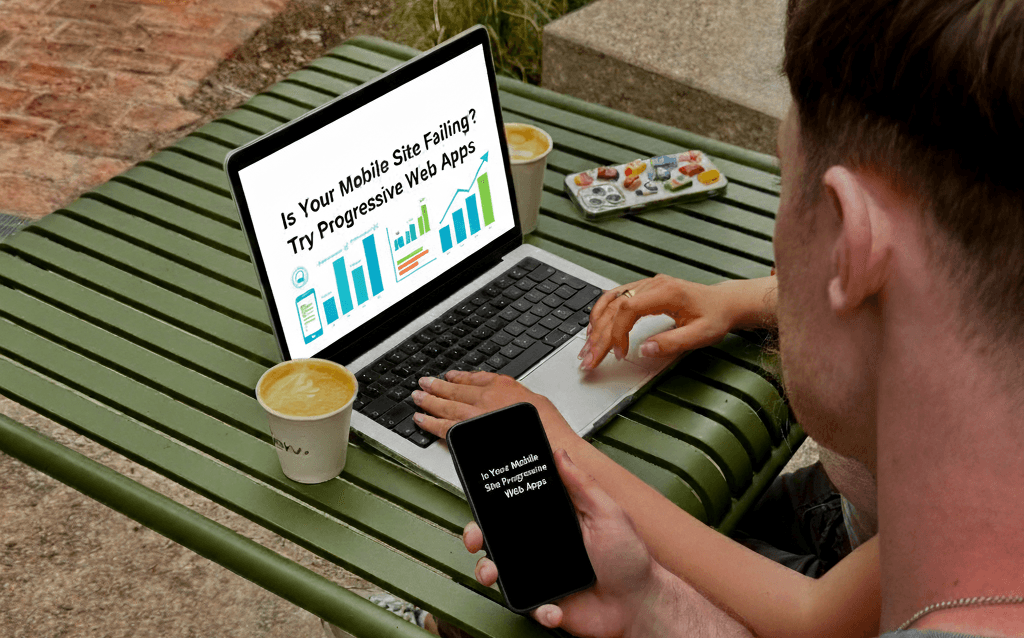Engaging Users with Animated Website Design
Did you know that 88% of users avoid returning to websites with a poor user experience? In today’s digital landscape, where attention spans are fleeting and competition is fierce, capturing and maintaining user interest has become more challenging than ever. Static websites, while functional, often fail to create that memorable impression that keeps visitors returning.
This is where animation steps in as a game-changer. We’ve noticed how animated website design transforms ordinary browsing into dynamic, engaging experiences that feel almost alive. Modern animation website solutions aren’t just about adding flashy effects – though those can be fun too – but about creating meaningful interactions that guide users through their journey.
In this article, we’ll explore how animation is a powerful tool for user engagement, explore the different types that work best, understand the psychology behind why our brains love motion, and discover best practices for implementation. We’ll also examine real-world examples and consider future trends that shape how we design animated experiences.
The thesis is simple: thoughtfully designed, animated website experiences don’t just look good—they enhance user engagement, improve navigation, and create memorable digital experiences that turn casual visitors into loyal users.
The Role of Animation in Enhancing User Engagement
Animation in web design isn’t just about aesthetics, though it does make things look pretty impressive. It’s a sophisticated communication tool that addresses several critical user experience challenges. Let’s break down the key roles animation plays:
Directing Attention: Think of animations as digital tour guides. They naturally draw the eye to critical elements like call-to-action buttons, important announcements, or key features. Users instinctively know where to look when a button gently pulses or a notification slides in from the corner. It’s like having a helpful assistant pointing out exactly what matters most on each page.
Providing Feedback: Micro-interactions are the unsung heroes of user confidence. When you hover over a button that changes colour or a form field highlights as you click on it, these small animations confirm that the system is responding to your actions. That reassuring “yes, I heard you” moment makes users feel in control.
Improving Navigation: Smooth transitions between pages and scroll effects create what we like to call “navigation flow.” Instead of jarring jumps between sections, users experience a seamless journey that feels intuitive and natural. It’s the difference between taking a bumpy bus ride and gliding on a well-maintained train.
Reducing Cognitive Load: Complex information becomes digestible through animated charts, progressive reveals, or step-by-step visualisations. Rather than overwhelming users with everything at once, animations can break down information into manageable chunks that unfold comfortably.
Storytelling and Emotional Connection: This is where things get interesting – animated websites can humanise brands in ways that static designs simply can’t. They create emotional moments, whether it’s a playful loading animation that makes waiting enjoyable or subtle movements that reflect a brand’s personality.
The psychology here is fascinating. Our brains are hardwired to notice motion, an evolutionary trait that once helped us spot predators or prey. This translates to increased attention and better engagement metrics in the digital world. Studies suggest that websites with well-implemented animations see reduced bounce rates and longer session durations, though the exact numbers vary depending on the industry and implementation quality. This is why many businesses investing in affordable web design in Manchester specifically request animated elements for their projects.
What stands out is how animated website design creates a competitive advantage in our crowded digital space. When most sites are static, the ones that move — thoughtfully and purposefully, become memorable. Some businesses are even expanding this concept to include animation in videos and multimedia content, creating cohesive brand experiences across all touchpoints. Many Manchester web design agency teams are now focusing specifically on these engaging animated solutions to help their clients stand out.
Types of Animations and How They Engage Users
The world of web animation is surprisingly diverse. It’s worth exploring the main animation techniques consistently delivering results, because not all animations are created equal. Whether you’re building a full animation website or adding targeted motion elements, understanding these approaches will help you make better design decisions.
1. Micro-Interactions
These are the subtle animations that happen during small user interactions. Button hover effects, form validation animations, and toggle switches might seem minor, but they’re incredibly powerful for encouraging exploration. Users naturally want to interact more when they see that a website responds to their every move. It’s like the difference between talking to someone who nods and responds versus someone who stares blankly.
2. Loading Animations
Nobody likes waiting, but loading animations can actually make the experience enjoyable. Instead of staring at a blank screen, users might see a bicycle pedalling across the screen (like HealthAxon’s charming animation) or a creative spinner that reflects the brand personality. These animations don’t make things load faster, but they reduce perceived wait time, which is often just as important.
3. Page Transitions and Scroll Animations
This category includes smooth fade transitions between pages, parallax effects, and scroll-triggered animations. HealthAxon’s floating clouds that respond to scrolling or Ticketsolve’s geometric shapes that dance as you navigate – these effects ensure that moving through a website feels fluid rather than choppy. The result? Users are more likely to explore multiple pages instead of bouncing after the first one.
4. Hero Animations
First impressions matter enormously, and hero animations in headers or landing sections can immediately create that “wow” factor. Alithea Capital’s building blocks that animate into place as the page loads are a perfect example; they’re sophisticated, relevant to their industry, and memorable. These animations set the tone for the entire user experience.
5. Hover and Interactive Animations
Mouse-driven effects create a sense of personal connection with the website. When elements respond to cursor movement – like Socci Capital’s splash page interactions – users feel like they’re directly manipulating the digital environment. It’s immersive in a way that static designs can’t match.
6. Accent Animations
These are focused animations that highlight specific elements without creating clutter. Pythia’s sports prediction highlights are a good example; they draw attention to key information without overwhelming the overall design. Think of them as digital highlighters that know exactly when and where to appear.
Each of these animation techniques can significantly impact user behaviour. Micro-interactions typically increase click-through rates, loading animations improve user patience and retention, and scroll animations encourage deeper content exploration. The key is knowing which approach serves your specific goals best, whether that’s improving your animation website performance or integrating video and animation elements for richer storytelling.
The Psychology Behind Animation’s Engagement Power
The effectiveness of animated websites isn’t just about pretty visuals; solid cognitive science supports why our brains respond positively to motion in digital interfaces.
Let’s start with some fundamental principles that make animation so powerful. Hick’s Law suggests that the more choices we present to users, the longer it takes them to decide. Smart animations can guide attention and reduce the perceived number of options, leading to faster decision-making. We’ve seen this work particularly well with progressive disclosure animations that reveal options one at a time rather than showing everything simultaneously.
The Gestalt principles also play a crucial role. Our brains naturally group related elements together, and animations can reinforce these groupings through coordinated movement. When several related items animate together, users intuitively understand they belong to the same category or function.
Perhaps most interesting is the Zeigarnik Effect, our tendency to remember incomplete tasks better than completed ones. Loading animations and progress indicators tap into this psychological quirk, creating a sense of anticipation and engagement that keeps users invested in the outcome.
There’s also the simple fact that motion naturally draws our eyes. This isn’t learned behaviour, it’s hardwired into our visual processing system. In web design, animated elements have an inherent advantage in capturing and holding attention.
The emotional aspect is equally important. Animations can create feedback loops that foster emotional connections between users and interfaces. When a website responds to user actions with appropriate motion, it feels alive and responsive rather than cold and mechanical. This emotional engagement translates directly into better user experience metrics.
Research indicates that animated content can improve recall by up to 60% compared to static alternatives. While we’d take specific percentages with a grain of salt, these things vary enormously based on context, the general principle holds: motion makes things more memorable.
What fascinates us most is how these psychological principles work together. A well-designed animated website doesn’t just look good; it feels intuitive, responsive, and engaging on a subconscious level that users might not fully recognise but appreciate.
Best Practices for Implementing Animation Effectively
Creating engaging animated website experiences is both an art and a science. Over the years, we’ve learned that following certain principles can mean the difference between animations that enhance user experience and those that become annoying distractions.
- Be Purposeful and Subtle: Every animation should serve a clear purpose, directing attention, providing feedback, or enhancing navigation. Gratuitous motion for its own sake usually backfires. We prefer animations that feel integral to the user experience rather than decorative add-ons. The best animations are often the ones users don’t consciously notice because they feel so natural.
- Optimise Performance: This is crucial and deserves more attention. Animations that cause lag or slow loading times will hurt user experience and SEO rankings. The most beautiful animation in the world becomes counterproductive if it makes your website sluggish. Always test performance on various devices and connection speeds, particularly mobile. This performance consideration is why web design companies in Manchester often recommend starting with simple animations before adding complexity.
- Ensure Accessibility and Honour the Importance of Website Accessibility for Inclusive Design: Not everyone can or wants to experience animations the same way. Users with vestibular disorders may experience discomfort or nausea from excessive motion, whilst others might find animations distracting or overwhelming. Always include options to disable animations or reduce motion for users who request it through their system preferences. This isn’t just good practice, it’s about creating truly inclusive digital experiences.
Avoid scroll jacking (hijacking the user’s scroll behaviour) as it can be particularly problematic for accessibility. Let users maintain control over their browsing experience. Many affordable SEO specialists in Manchester also emphasise that accessible animations can improve your search rankings by enhancing user experience metrics.
- Maintain Consistency: Use uniform animation styles, timing, and easing throughout your website. Inconsistent animation feels jarring and unprofessional. Develop an animation style guide just like you would for colours or typography. This approach is fundamental when working with branding services in Manchester, especially professionals who need to ensure animations align with your overall brand identity.
- Test Across Devices: What looks smooth on a high-powered desktop might stutter on a mobile device. Always verify that animations perform well across different platforms, browsers, and screen sizes. Mobile optimisation is crucial since many users will experience your animated website primarily on their phones.
- Balance with Content: Animations should enhance content readability, not compete with it. Be especially careful with text-heavy sections where motion might make reading difficult. Sometimes the best animation choice is no animation at all.
For implementation, tools like CSS animations, JavaScript libraries, or Adobe Animate each have their place depending on complexity and requirements. Some designers also explore how video and animation can work together, embedding animated video elements within web interfaces for even richer experiences. The key is choosing the right animation techniques for the specific job rather than forcing a particular technology to do everything.
Common pitfalls include excessive motion that causes user discomfort, animations that delay essential actions, and effects that look outdated or unprofessional. Remember, animation trends change quickly – what looked cutting-edge two years ago might feel stale today.
Real-World Examples and Case Studies
Let’s share some animated websites that demonstrate these principles in action. These examples show how different approaches can achieve excellent results while serving their specific audiences and goals.
Apple’s Product Showcases: Apple has mastered the art of subtle scroll animations in their product presentations. As users scroll through iPhone or MacBook pages, elements gracefully fade in, rotate, or slide into position. The animations feel effortless and enhance the storytelling without overwhelming the technical specifications. We particularly appreciate how these animations work on both desktop and mobile, maintaining smooth performance across devices. The result is increased time spent on product pages and better feature comprehension.
Airbnb’s Booking Experience Airbnb uses micro-interactions and transitions throughout its booking process to guide users and reduce anxiety about complex transactions. Search filters animate smoothly, property images transition elegantly, and form interactions provide clear feedback. These animations create confidence during what could be a stressful booking process. Users report feeling more comfortable completing bookings, and the platform sees better conversion rates.
HealthAxon’s Interactive Experience HealthAxon created an immersive browsing experience with scroll-triggered clouds and delightful loading animations featuring a cycling character. These playful elements reflect the health and wellness focus while making the website memorable. The animations don’t interfere with information consumption but add personality that differentiates them from more clinical healthcare websites. Users spend significantly more time exploring different sections of the site.
Ticketsolve’s Brand Reinforcement Ticketsolve uses floating geometric shapes and coordinated animations to reinforce its modern, creative brand identity. The animations feel purposeful rather than decorative; they guide users through the ticket purchasing flow while maintaining visual interest. The result is a stronger brand recall and improved user engagement throughout the booking process.
These examples share intentional design, where every animation serves both aesthetic and functional purposes. They’ve all found ways to make their animated website experiences feel faster and more responsive, not slower or cumbersome.
If you’re planning your animation website project, consider documenting these examples with screenshots or brief videos to understand how the motion contributes to the overall user experience.
Future Trends in Animation for Web Engagement
The landscape of animated website design continues to evolve rapidly, and we are excited about several emerging trends that could reshape our thinking about user engagement.
AI-driven animations represent the most intriguing development. Imagine websites that adapt their animation style and intensity based on individual user behaviour and preferences. Instead of one-size-fits-all motion design, we might see personalised animated website experiences that learn from how users interact with different types of content. Some users might prefer subtle, minimal animations, while others enjoy more dramatic effects – AI could tailor these experiences automatically.
Three-dimensional elements and virtual reality integration are becoming more accessible as browser capabilities improve. We’re moving beyond flat, two-dimensional animations toward immersive experiences that can showcase products, tell stories, or provide interactive demonstrations in ways that feel almost tangible. Integrating video and animation with these 3D environments opens new user engagement possibilities.
Interactive simulations are another area showing tremendous potential. Instead of static infographics or simple animations, websites can offer dynamic, user-controlled experiences that let visitors explore data, test scenarios, or customise outcomes in real-time. This trend particularly excites us because it transforms passive content consumption into active exploration.
Sustainability in design is becoming increasingly important, including in animation technique choices. Future animated website projects will likely need to balance visual appeal with energy efficiency, considering the environmental impact of resource-intensive animations. This might lead to more sophisticated optimisation techniques and more intelligent choices about when and how to use motion.
I also expect better integration with accessibility standards from the ground up rather than as an afterthought. Future animation website frameworks will likely include accessibility features by default, making it easier for designers to create engaging experiences that work for everyone.
The most successful future trends will likely enhance user agency and control rather than simply creating impressive visual spectacles. Users want to feel empowered by technology, not overwhelmed by it.
Conclusion
Animated website experiences have evolved from novelty to necessity in creating engaging digital experiences. Throughout this exploration, we’ve seen how thoughtful animation enhances user engagement through better navigation, more transparent communication, and stronger emotional connections.
The key takeaway is that successful animation techniques are strategic, accessible, and performance-optimised. It’s not about adding motion for its own sake, but about solving real user experience challenges while creating memorable interactions that keep visitors returning.
Whether you’re directing attention with micro-interactions, reducing perceived wait times with clever loading animations, or creating smooth navigation flows with scroll effects, every animation choice should serve your users’ needs while reflecting your brand personality.
As we look toward the future, the most successful animated website projects will be those that balance innovation with inclusivity, ensuring that engaging experiences remain accessible to all users regardless of their abilities or preferences.
Ready to bring your website to life with engaging animations? The Social Bay‘s affordable web design creates animated websites that captivate users while maintaining accessibility and performance standards. From subtle micro-interactions to dynamic scroll effects, we craft animations that enhance user engagement and drive conversions. We also offer branding, hosting, and maintenance to keep your animated website running smoothly. Want to explore how professional animated web design can transform your user experience? Contact us now!
Email: hello@thesocialbay.co.uk
Call: 07441 918230
Visit: https://thesocialbay.co.uk/




